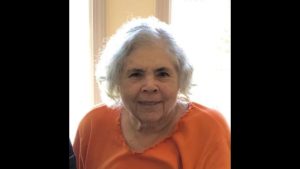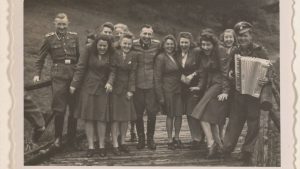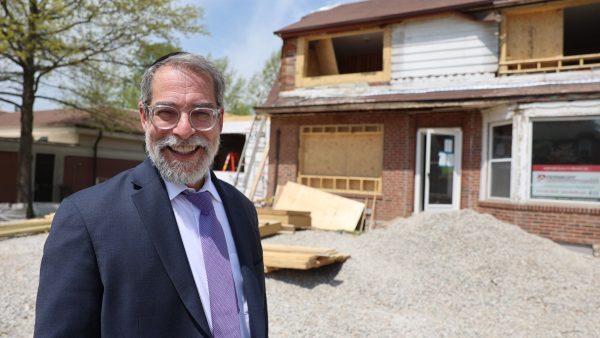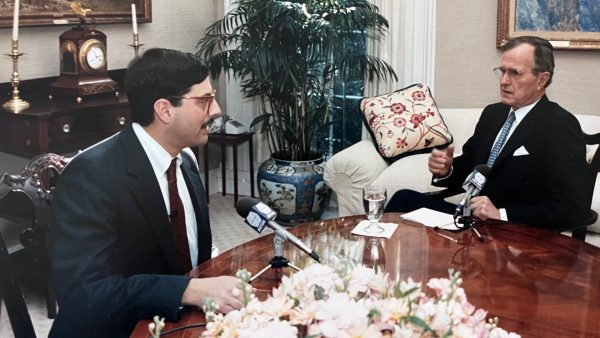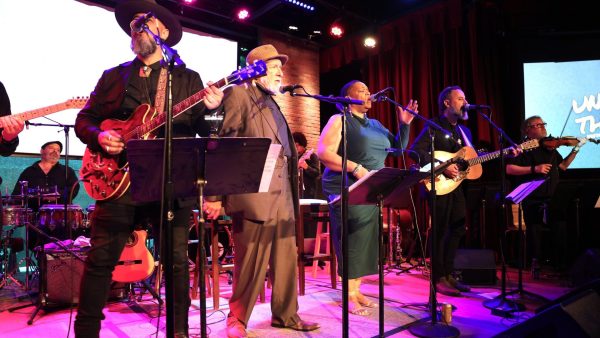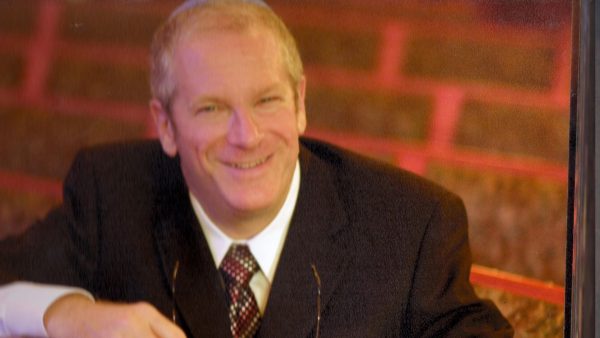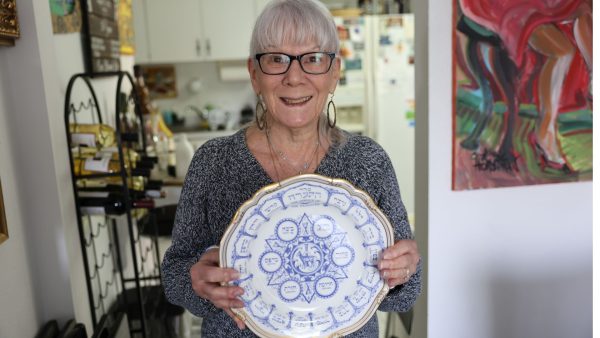Teacher brings Holocaust learning to Troy
Published May 20, 2008
The halls of the corridor are covered with student-created posters reflecting their personal impressions of the Holocaust. In the classroom there is a box full of Holocaust literature.
One might think this school must be in the Clayton, Ladue or Parkway school districts. You’re off by around 60 miles. The school is Claude Brown Intermediate in Troy, Missouri in Lincoln County and the architect behind this unexpected program is Susan Toedebusch, a young, sixth-grade teacher.
“It’s a two-to-three week unit and I teach it in my communications arts class because there’s so much literature in it,” Toedebusch said. “The kids read the books on their own — I let them choose from the box.” Toedebusch, who is a native of Troy and is not Jewish, was inspired to teach about the Holocaust when she was a student at Maryville University in St. Louis. “One of the classes we had to take was children’s literature and there was a huge list of books we had to buy. One of them was The Devil’s Arithmetic.” She was moved by the book and subsequent movie about the Holocaust.
“The Holocaust is important to teach. I tell the kids that if they are so mean and hateful to each other, they need to look at history to see what has been done,” Toedesbusch said. “I don’t paint a pretty picture for them. I have The Holocaust Chronicle that contains graphic pictures. I show it to them and we discuss it. I think the more they see the better. They see all these horrible movies from Hollywood and video games that are all made up…this is not made up.”
Toedebusch has been teaching this unit for the past eight years and the school has noticed a change in the students after they take the course. “I think the biggest thing is the compassion we’re seeing in the kids and that they’re getting the whole history of the Holocaust in a greater depth,” Susan Bell, principal of the school, said. And while the school hasn’t tracked any solid data on a change in the kids’ actions since the course began, Bell thinks racial bullying has declined; they’re not targeting specific groups of people. Toedebusch said she sees kids being kinder to one another. And while she starts the course in March to correspond with Holocaust Memorial Day in April, she wishes she could start it at the beginning in the year to take advantage of the niceness.
In addition to reading books, Toedebusch shows the classes movies about the Holocaust. The children have seen such films as Number the Stars, Paperclips, and The Devil’s Arithmetic. She leads the class in discussions in order to reinforce the lessons of the stories. “I even ask the students ‘Why is it so important to learn about Holocaust?’ I explain that we must not let it happen again. We must remember that millions died at the hands of people who stood by and did nothing; Hitler was a bully.”
A three-dimensional special addition to Toedebusch’s class is when Holocaust survivors, provided by the Holocaust Museum and Learning Center, come to speak to the school. Rachel Miller and Bea Wyllie, both survivors, made the trip to Troy in early May to tell their stories. “I told them about my history and what happened to me from the time my family was taken away to the end of the war,” Miller said. She was born in France and survived by hiding in a convent part of the time. Miller lost 93 relatives. “I want the children to remember they met a Holocaust survivor. I told them there will be deniers and you can’t argue with them; you might as well be talking to a wall. The only thing you can say is ‘I met a survivor’ and as long as you can say that then I have told my story.”
While everyone in attendance was struck with Miller’s and Wyllie’s stories, the two women were also impressed with the reception they received and the efforts put into the course. “I didn’t expect the reaction I received when I finished my talk, about how words hurt,” Wyllie said. “They all started to applaud. I was really floored, didn’t expect that. These children knew what we were talking about and were informed; we were absolutely floored.” Wyllie said she’s been to other schools around St. Louis, including in West County, and never received a response like this. “It’s all because of this young teacher. It’s the teacher that’s the important thing, the way the information is presented,” Wyllie said. “Who knew in the middle of this rural area, there would be this interest? Both of us were absolutely amazed at the display they had.”
Miller agrees with Wyllie. “This was by far the greatest reception I have seen. Other schools have had us speak but not because it was part of the curriculum like at Claude Brown,” Miller said. Toedebusch said that some of her former students who are now in eighth grade came up to Miller and Wyllie and asked if they could give them hugs.
Toedebusch is glad she has been able to offer the course to her sixth-grade students because of its long-lasting effect. She’s even heard from high school teachers who say that when they begin talking about the Holocaust the students who had Toedebusch’s class will say “We remember this.”
So in this small town of around 13,000, which is smaller than the population of Creve Coeur, where Toedebusch has seen only five Jewish students since she began teaching, this dynamic and passionate young teacher is leading the charge to make sure a new generation doesn’t forget…one class at a time.





